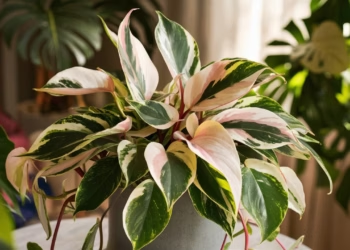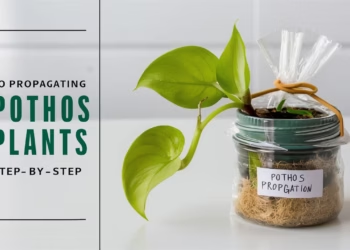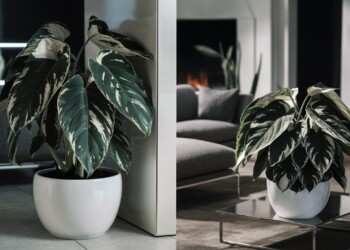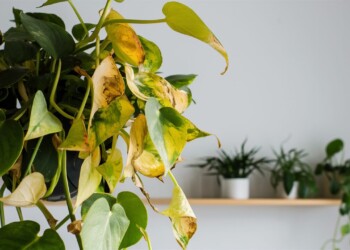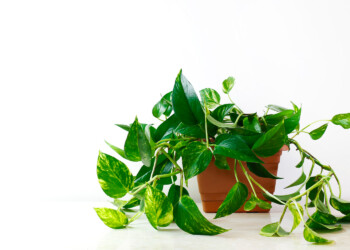Welcome to the ultimate indoor guide for begonia maculata care, propagation, and varieties! Whether you’re a seasoned plant enthusiast or just starting your green journey, this comprehensive guide will equip you with all the knowledge you need to nurture and propagate these stunning plants. From understanding their unique care requirements to exploring the diverse range of varieties available, we’ve got you covered!
Begonia Maculat
Before we delve into the nitty-gritty of care and propagation, let’s take a moment to appreciate the beauty of the begonia maculata. Also known as the polka dot begonia or the angel wing begonia, this striking plant features glossy, dark green leaves adorned with white polka dots on top and a rich crimson underside. Its unique foliage adds a touch of elegance and sophistication to any indoor space, making it a favorite among plant enthusiasts worldwide.
But beware, fellow plant lovers, while the begonia maculata may exude beauty, it also demands a bit of attention and care to thrive. Fear not! With the right knowledge and techniques, you’ll be able to cultivate a flourishing begonia maculata collection in no time. So, let’s dive into the ultimate guide to caring for, propagating, and exploring the varieties of begonia maculata!

Care Guide: Nurturing Your Begonia Maculata
Caring for your begonia maculata is essential to ensure its health and vitality. Here’s a comprehensive care guide to help you become a pro at nurturing these stunning plants:
Light
- Indirect Light: Begonia maculata thrives in bright, indirect light. Avoid exposing it to direct sunlight, as this can scorch its delicate leaves.
- Shade Tolerance: While it enjoys bright conditions, it can tolerate some shade, making it an ideal choice for indoor spaces with filtered sunlight.
Watering
- Moderate Moisture: Keep the soil evenly moist but not waterlogged. Overwatering can lead to root rot, so allow the top inch of soil to dry out before watering again.
- Avoid Wet Feet: Ensure proper drainage in your pot to prevent water from pooling at the bottom, which can suffocate the roots.
Temperature and Humidity
- Moderate Temperatures: Begonia maculata prefers temperatures between 65-75°F (18-24°C). Avoid exposing it to drastic temperature fluctuations.
- Humidity Lover: These plants thrive in high humidity environments. Consider placing a humidifier near your begonia maculata or misting its leaves regularly to maintain adequate moisture levels.

Soil
- Well-Draining Mix: Use a well-draining potting mix rich in organic matter. A mix of peat moss, perlite, and compost works well for begonia maculata.
- Acidic Soil pH: Aim for a slightly acidic soil pH between 5.5-6.5 to support optimal growth.
Fertilization
- Balanced Fertilizer: Feed your begonia maculata with a balanced liquid fertilizer diluted to half-strength during the growing season (spring and summer).
- Reduce in Winter: Cut back on fertilization during the dormant season (fall and winter) to allow the plant to rest.
Pruning
- Regular Maintenance: Remove any yellowing or dead leaves promptly to maintain a tidy appearance and prevent disease spread.
- Encourage Bushiness: Pinch back leggy growth to encourage branching and promote a fuller, bushier plant.
Pests and Diseases
- Vigilant Monitoring: Keep an eye out for common pests such as aphids, spider mites, and mealybugs. Treat any infestations promptly with insecticidal soap or neem oil.
- Preventive Measures: Ensure good air circulation around the plant and avoid overcrowding to minimize the risk of fungal diseases.

Propagation Techniques: Growing Your Begonia Maculata Family
Ready to expand your begonia maculata collection? Propagation is the key! Here are some tried-and-tested techniques to propagate your beloved plants:
Stem Cuttings
- Select Healthy Stem: Choose a healthy stem with several leaves and nodes.
- Prepare Cutting: Use clean, sharp scissors or pruning shears to take a 4-6 inch cutting below a node.
- Remove Lower Leaves: Strip away the lower leaves to expose the nodes.
- Rooting Medium: Dip the cut end in rooting hormone (optional) and plant it in a well-draining rooting medium such as perlite or vermiculite.
- Provide Humidity: Cover the cutting with a plastic bag or place it in a propagation box to maintain high humidity.
- Root Development: Keep the cutting in a warm, bright location, and roots should develop within a few weeks.
- Transplanting: Once roots have developed, transplant the cutting into a pot with potting soil and treat it like a mature plant.
Leaf Cuttings
- Select Healthy Leaf: Choose a healthy leaf with prominent veins.
- Cut Leaf into Sections: Cut the leaf into sections between the veins, ensuring each section has a vein.
- Lay Sections on Soil: Place the leaf sections on top of moist potting soil, vein side down.
- Provide Humidity: Cover the tray with plastic or a propagation dome to maintain high humidity.
- Root Development: Roots will sprout from the veins of the leaf sections within a few weeks.
- Transplanting: Once roots have developed, gently separate the sections and transplant them into individual pots.
Varieties of Begonia Maculata: Exploring Diversity
The begonia maculata comes in a variety of cultivars, each with its own unique characteristics and charm. Here are some popular varieties to consider adding to your collection:
- Begonia Maculata ‘Wightii’: This variety features larger, more elongated leaves with distinct white polka dots and crimson undersides.
- Begonia Maculata ‘Tamaya’: Known for its compact growth habit and prolific flowering, ‘Tamaya’ is a favorite among collectors.
- Begonia Maculata ‘Angel Wing’: With its angelic foliage and delicate appearance, this variety adds a touch of ethereal beauty to any indoor space.

FAQs
How do you care for a Begonia maculata indoors?
- Light: Place Begonia maculata in bright, indirect light for optimal growth .
- Temperature: Maintain a warm environment with temperatures between 65-75°F (18-24°C) .
- Humidity: Begonia maculata prefers high humidity, so consider using a humidifier or placing the plant on a pebble tray filled with water .
- Watering: Keep the soil evenly moist but not waterlogged. Water when the top inch of soil feels dry, typically every 7-10 days, adjusting based on environmental conditions .
- Soil: Plant Begonia maculata in well-draining soil to prevent waterlogging and root rot .
- Fertilization: Feed the plant with a balanced, water-soluble fertilizer every 4-6 weeks during the growing season to support healthy growth.
Does Begonia maculata need sun?
Begonia maculata thrives in bright, indirect light. While it appreciates sunlight, direct exposure to the sun’s rays can scorch its delicate leaves. Therefore, it’s best to place it in a location where it receives filtered sunlight or indirect light to prevent leaf damage.
How often should I water my Begonia maculata?
Water Begonia maculata when the top inch of soil feels dry to the touch. Typically, this translates to watering every 7-10 days, but the frequency may vary depending on factors like humidity, temperature, and pot size. Ensure that the soil remains consistently moist but not waterlogged to avoid root rot .
Should you mist Begonia maculata?
Misting Begonia maculata can help increase humidity levels around the plant, which it enjoys. However, avoid misting directly on the leaves, as excessive moisture can lead to fungal issues. Instead, mist around the plant or use a humidifier to maintain the desired humidity level .
How do I make my Begonia Maculata happy?
- Provide Adequate Light: Place it in a spot with bright, indirect light.
- Maintain Proper Humidity: Increase humidity levels by using a humidifier or pebble tray.
- Water Carefully: Keep the soil consistently moist but not waterlogged.
- Avoid Direct Sunlight: Protect it from direct sun to prevent leaf scorching.
- Regular Feeding: Fertilize every 4-6 weeks during the growing season.
- Monitor for Pests: Keep an eye out for pests like spider mites and treat promptly if detected.
- Prune as Needed: Trim leggy growth and remove any dead or yellowing leaves to encourage healthy growth .

